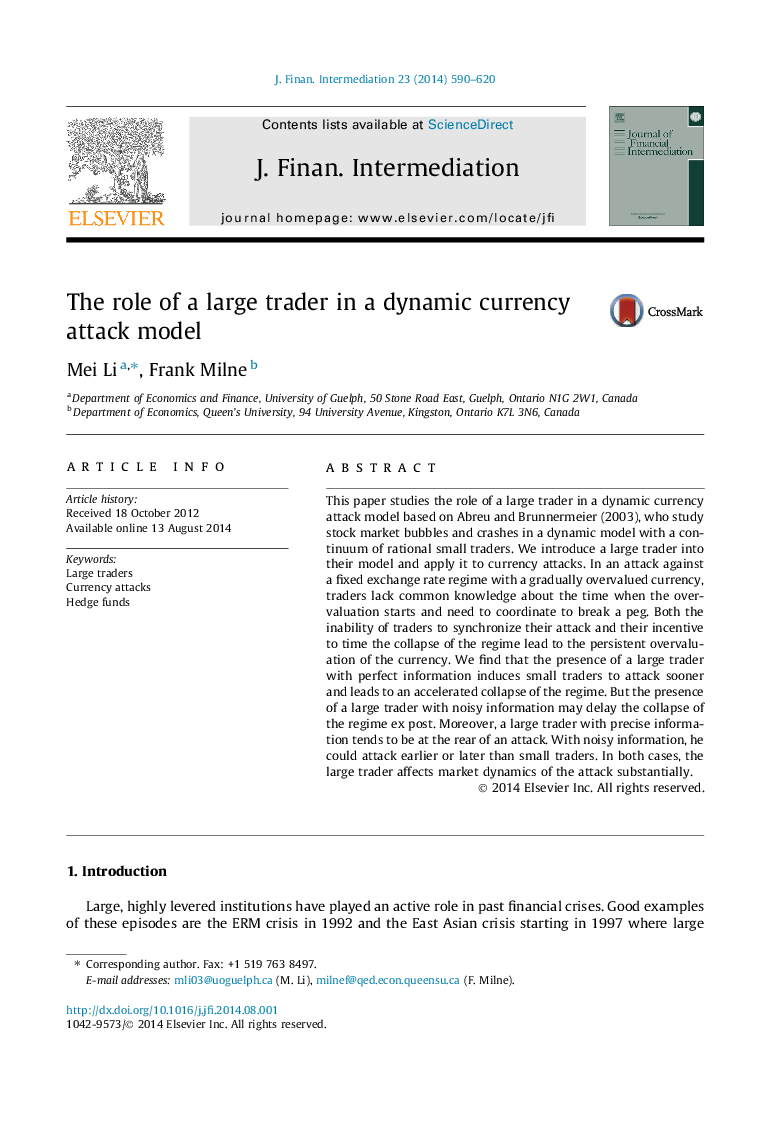| Article ID | Journal | Published Year | Pages | File Type |
|---|---|---|---|---|
| 960933 | Journal of Financial Intermediation | 2017 | 31 Pages |
Abstract
This paper studies the role of a large trader in a dynamic currency attack model based on Abreu and Brunnermeier (2003), who study stock market bubbles and crashes in a dynamic model with a continuum of rational small traders. We introduce a large trader into their model and apply it to currency attacks. In an attack against a fixed exchange rate regime with a gradually overvalued currency, traders lack common knowledge about the time when the overvaluation starts and need to coordinate to break a peg. Both the inability of traders to synchronize their attack and their incentive to time the collapse of the regime lead to the persistent overvaluation of the currency. We find that the presence of a large trader with perfect information induces small traders to attack sooner and leads to an accelerated collapse of the regime. But the presence of a large trader with noisy information may delay the collapse of the regime ex post. Moreover, a large trader with precise information tends to be at the rear of an attack. With noisy information, he could attack earlier or later than small traders. In both cases, the large trader affects market dynamics of the attack substantially.
Keywords
Related Topics
Social Sciences and Humanities
Business, Management and Accounting
Strategy and Management
Authors
Mei Li, Frank Milne,
